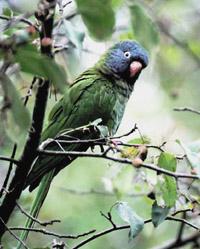Talking birds
Who has never received from a balcony of his neighbor a beautiful word? It is curious the ability of these birds to imitate human language. It seems that, imitating the frequency pattern of each vocal and consonant, they manage to speak like humans.

The ethologist of the University of Arizona (Tucson) Irene Pepperberg and her research team, Alex, have analyzed through the X-rays the formed African grey parrot that speaks English. To complete the words, Alex uses a strategy similar to the human being. It creates vibration in siring and then transforms such vibration with the throat, mouth and tongue to produce the desired sound. For example, it opens more the peak for an "ee" than for an "ah", and will probably advance the tongue more. But Alex has no teeth or lips, very necessary organs in the creation of consonants. However, Alex is able to form consonants, although researchers still do not know how. It is believed that the parrot would take advantage of the esophagus to create the "b".
Papagaitxos, smaller birds in the parrot family, also have the ability to imitate human language, but have problems with lower sounds. Just as small flutes can't produce the lowest notes for their size, papagaitxos also have size problems. To be heard, birds must go to high frequencies. In the imitation of the human voice, papagaitxos use a technique similar to that used by the radios of the AM (modulated amplitude): produce a basic vibration that flows in the siring to 2 or 3 kilohertz and then use a second vibration that supposedly occurs in the siring to modulate the initial. Papagaitxos are capable of imitating human sounds by creating additional frequencies with combinations of two vibrations.





